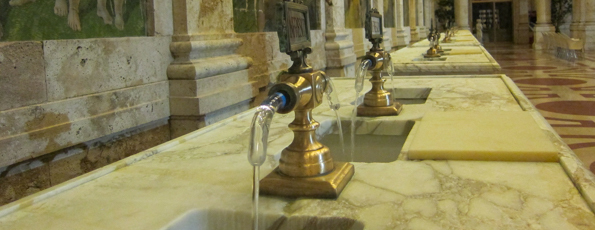
Montecatini Terme is the ideal base from which to explore its more famous neighbours in the Italian region of Tuscany. Early every morning cavalcades of touring buses roll down the wide, tree-lined avenues to collect their passengers. But those who take the time to stroll around its streets will soon find clues that suggest a glorious past. They may wonder why the modern commercial centre on Via Roma with its striped buildings reminiscent of Siena is fronted by such a grand façade.
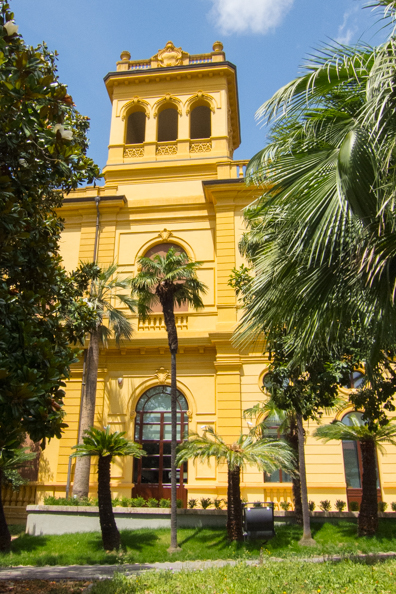
This façade is all that remains of the Teatro Kursaal a large complex that was once central to the success of this little town during its years of prosperity. The complex of the Kursaal comprising a cinema, theatre, disco and a huge game room was founded at the beginning of the twentieth century by Montecatini Terme Casino, a private company. Visitors from all over Italy and beyond flocked here to enjoy the facilities. This golden era ended when the Kursaal was put up for sale but failed to attract any buyers that understood that this complex was central to the prosperity of the town. It lay abandoned and empty for many years until the beginning of the twenty first century when the Soc. Monaco di Verona di Luigi Ferro took it over and developed the site as a modern commercial centre retaining only the front section of the original building. Fortunately, not every building of this era has suffered the same fate. Via Roma leads into the main square, Piazza del Popolo. This large open square is dominated by the neoclassical Basilica of Santa Maria Assent. This relatively modern church replaced the nineteenth century church following its destruction. In 1988, Pope John Paul II proclaimed this church to be a minor basilica. Its imposing concrete exterior should not deter the visitor from stepping inside to admire the stained glass windows by the painter Giorgio Scalco.
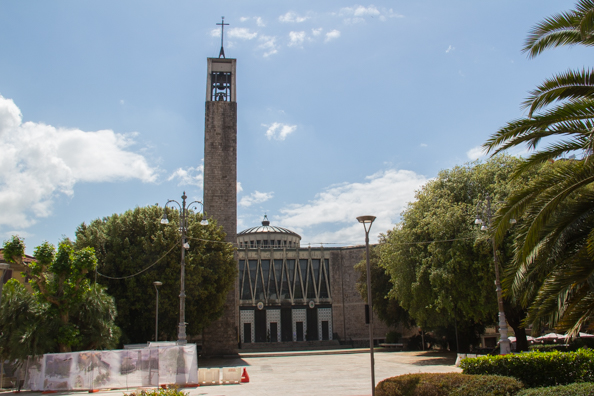
Viale Verdi leads out of the square. On the corner of this street is the historic Grand Hotel Plaza and Locanda Maggiore. The name “Locanda (Inn) Maggiore” was originally given to a complex of five interconnected buildings and that became the most important hotel in the town. The original hotel closed down in 1960 and when it was taken over by the new owners they decided to restore the building to its former glory with an interior that reflected the golden age of Montecatini Terme when the rich and famous, including the likes of Rossini stayed in the hotel and gathered in the Gran Caffè Gambrinus, inaugurated in 1931, on its premises . In the lobby of the hotel a marble plaque proclaims that for many summers, until 1900 the hotel was the grateful residence of Giuseppe Verdi who, tired of glory, would seek peace of mind among the green fields and the splendour of the sky, which he always put before all the clamours of success. But Verdi never neglected his work while he was staying at the hotel and it was here that he completed the fourth act of his penultimate opera, Otello. The presence of Verdi is also remembered by a statue of the composer outside a theatre named after him further down the road, Teatro Verdi.
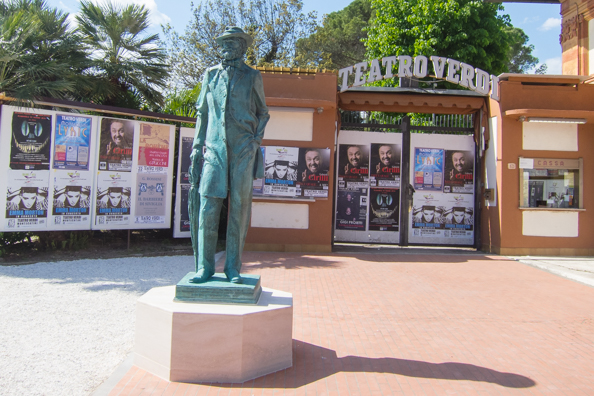
As befits a fashionable town it was decided in 1911 that Montecatini Terme should have a new town hall. The Palazzo del Municipio was subsequently built on Viale Verdi on the site of the old stables of the Grand Duchy. The construction of this building was interrupted by the First World War and was finally completed in 1919. This renaissance style building still functions as the local town hall but visitors can still go inside the to view the impressive artworks in the foyer. Across the road is the more subdued building that was used by the Medici family when they were in town.
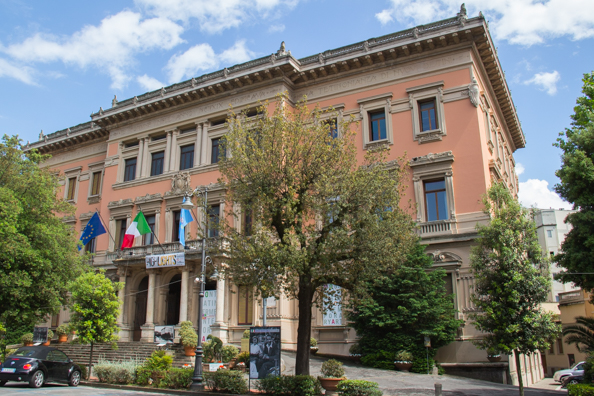
Now we come to the final clue – the reason this town became so famous during the nineteenth century, the Excelsior Terme. This is one of nine spas dispensing the healing waters of the town as well as other treatments and part of the fascinating history of Montecatini Terme and its waters that were first discovered during Roman times. The town derives its name from the Italians word for mountain, Monte, and the Latin word Catinus that means dell. Terme is a reference to the thermal waters of the area. Like many Tuscan towns it was involved in the struggle for power that raged between the more powerful towns. During the Middle Ages it was ruled by the bishops of Lucca and then it was conquered by Florence. While the Florentines ruled they discovered the thermal waters and the first spas were built. Siena conquered the town in the mid-sixteenth century but its domination was short and when the Florentines returned a few years later they restored the thermal baths. During the eighteenth century, by which time the town was part of the Grand Duchy of Tuscany, the Grand Duke Pietro Leopoldo of Lorena drained the swamps and created the first thermal resorts. At the end of that century the baths were given to the Benedictine monks of the Abbey of Florence who built an inn where foreigners could stay. After the Napoleonic invasion at the beginning of the nineteenth century the baths became the property of the Tuscan Grand Dukedom and later, following the unity of Italy, they became state property. It was during the Belle Époque (1871–1914) that Montecatini reached the height of its fame and prosperity thanks to the reputation of the healing powers of its waters. The buildings and works of art in the Art Nouveau style can still be found in the town including the Excelsior Terme that was built at the beginning of the nineteenth century.
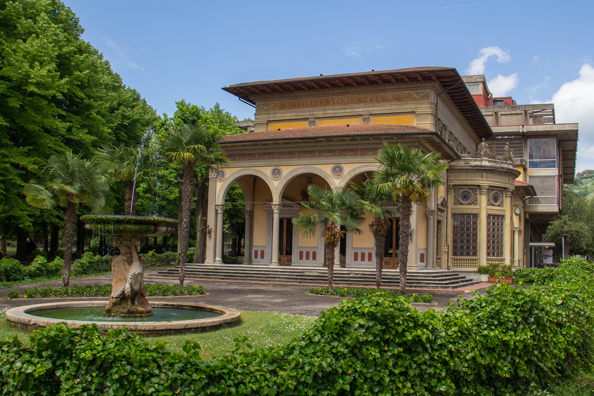
The Excelsior Terme also provides an excellent venue for the very popular opera concerts that are organised throughout the summer every year.
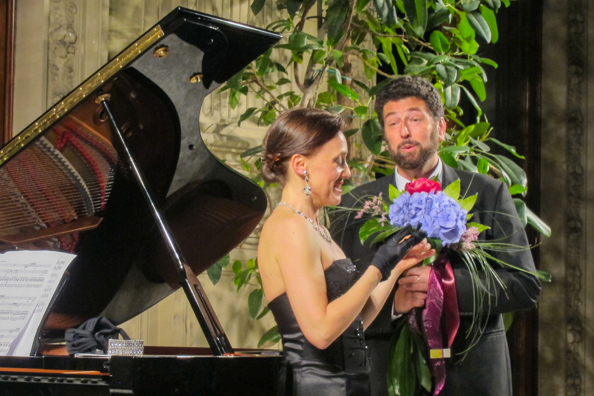
Behind the Excelsior Terme is the Spa Park the site of several other spa buildings many of which are also used for other purposes such as art galleries and other exhibitions. This well-mainlined park is criss-crossed by paths and offers a very pleasant route to and from the town. At one extreme of the park and the end of Viale Verdi is the majestic Tettucio Terme. Visitors to this spa can drink thewater from the Rinfresco, Tettuccio, Regina and Leopoldine springs that flows out warm from the ground. These waters are also available in the Excelsior and Redi Spas. The latter is named after Frencesco Redi considered to be one of the founders of modern medicine and a strong advocate of the extraordinary properties of the Montecatini waters. Recently renovated the building houses rooms for mud and bath treatments, inhalation therapy, physiotherapy and many other therapies. But neither of these spa resorts can match the setting of Tettuccio Terme. The lavish Liberty-style building is set in beautiful parkland. Most days there are performances of live music and with a cafe on site for light refreshments it is easy to while a few hours there – there is a special entrance fee for visitors who do not want to take the waters. There is a separate building for the treatments behind the main building and conference/function room in the grounds.
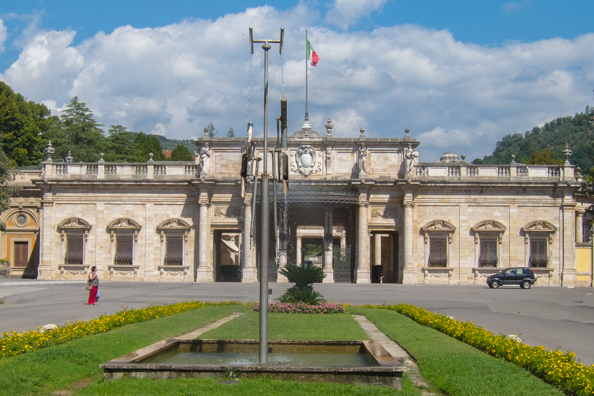
It is worth a visit to Tettuccio just to admire its beautiful colonnaded interior which makes a wonderful venue for a variety of events throughout the year.
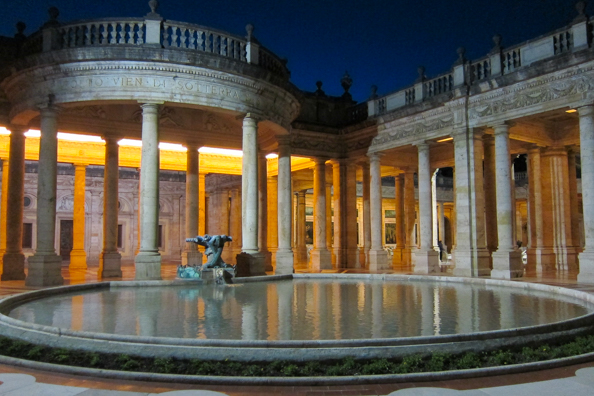
***********************************************************************
Getting there
I stayed in Montecatini Terme while on a holiday in Tuscany organised by Solos Holidays that specialises in holidays for independent travellers.
This article is now featured on GPSmyCity. To download this article for offline reading or travel directions to the attractions highlighted in this article, go to Walking Tours in Montecatini Terme on GPSmyCity